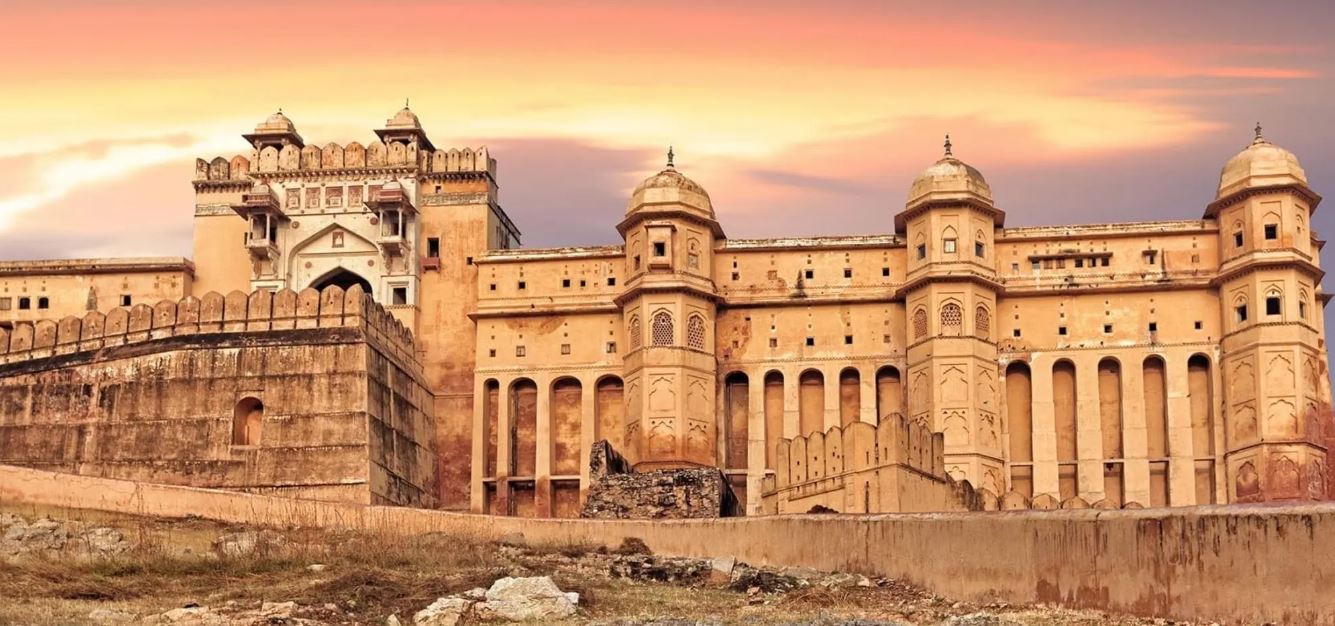Rajasthan is renowned for its majestic forts and palaces that offer a glimpse into India’s rich cultural heritage. Known as the ‘Land of Kings’, the state is a perfect example of the country’s traditional customs and practices. Its grand forts and palaces are a testament to the glorious history that India has carefully preserved. Rajasthan is a state that is known for its vibrant culture and colorful traditions. The forts and palaces of Rajasthan offer a glimpse into the state’s rich cultural heritage, and the architecture is a testament to the grandeur of a bygone era. The colorful facades of the houses and buildings, along with the traditional clothes adorned with intricate mirror work, showcase the state’s love for bright hues and vibrant colors. Everywhere you look, you’ll be surrounded by a burst of colors that add to the charm and vibrancy of this beautiful state.
Involve in Fort Sighting in Rajasthan
Mehrangarh Fort
Mehrangarh Fort, located in the Blue City of Jodhpur, is a must-visit tourist destination that offers a glimpse into Rajasthan’s rich cultural heritage. Constructed in 1460 by Rao Jodha, the fort has a fascinating history that is well-documented in the annals of time. In addition to its historical significance, Mehrangarh Fort has also been featured in popular movies such as Awarapan and The Dark Knight Rises. The intricate carvings and regal Rajasthani designs showcased in the fort’s interiors make it one of the most popular forts in Rajasthan.
Ranthambore Fort
Established in the 10th century by the Chauhan Rajputs, this grand fortress has evolved into a renowned destination for tourists exploring Ranthambore National Park. Perched atop the cliffs of Thambhore Hill, it is enveloped by vast forests, spanning an impressive area of 4 miles. Within its walls lie the remnants of temples, palaces, and pavilions, intricately connected by a labyrinth of courtyards and pathways. Once a symbol of formidable strength, having withstood countless sieges to safeguard the Rajput empire, this illustrious fort now beckons historians and travelers alike, offering a glimpse into its storied past.
Amber Fort
The Amber fort, located near Jaipur, is one of the largest and grandest forts in India, known for its perfect blend of Mughal and Hindu architecture. The Kachwaha Rajputs built the fort in 1592 under the leadership of Raja Man Singh I, who was also a powerful Mughal army commander. The fort underwent several reconstructions and modifications over the next 150 years and was the seat of the Kachwaha Rajputs until they moved their capital to Jaipur in 1727. The Amber fort is built of red sandstone and has four levels, each with a courtyard. It houses several structures like the Diwan-e-Aam and Diwan-e-Khas, the Sheesh Mahal, and the Sukh Niwas. The Amber fort is also referred to as the Amber palace, and its interiors are a true testament to the grandeur of the Rajput Maharajas. It is a popular tourist attraction and was declared a UNESCO World Heritage Site in 2013.
Jaisalmer Fort
Jaisalmer Fort, famously known as Sonar Quilla or the Golden Fort, stands as a magnificent sandstone marvel emerging gracefully from the golden dunes of the Thar Desert. Designated as a UNESCO World Heritage Site, it ranks among the most expansive inhabited forts globally. Within its walls, a labyrinth of narrow lanes unfolds, adorned with ornate Jain temples, grand palaces, and vibrant shops offering a plethora of handicrafts and textiles. The resplendent architecture of Jaisalmer Fort, coupled with its awe-inspiring vistas of the desert, promises to captivate every visitor’s senses.
Kumbhalgarh Fort
Kumbhalgarh Fort, a massive fortress located in Mewar, Rajasthan, has a rich history dating back to the 15th century. It is considered one of the top historical forts in the region, having been built by Rana Kumbha on an impregnable hill. Interestingly, the fort is also the birthplace of Maharana Pratap, the renowned warrior king of Mewar. What sets Kumbhalgarh apart is its 36-kilometre-long continuous wall, the second-longest in the world after the Great Wall of China. With numerous attractions to explore, the colossal Kumbhalgarh is definitely worth a visit.
Chittorgarh Fort
Chittorgarh Fort is one of the historical landmarks in Rajasthan with a terrifying backstory. The remarkable past of the Chittorgarh Fort lies in three siege attempts, and the act of Jauhar committed all three times by women and children. The first Jauhar was led by Rani Padmini, followed by Rani Karnavati. The famous war against Allaudin Khalji in 1303 AD has left an indelible mark in Indian history. The fort is popularly known as Chittor Fort, referring to Water Fort, as the massive architecture stocks 22 water bodies inside the fort, including the sacred Gaumukh reservoir.
